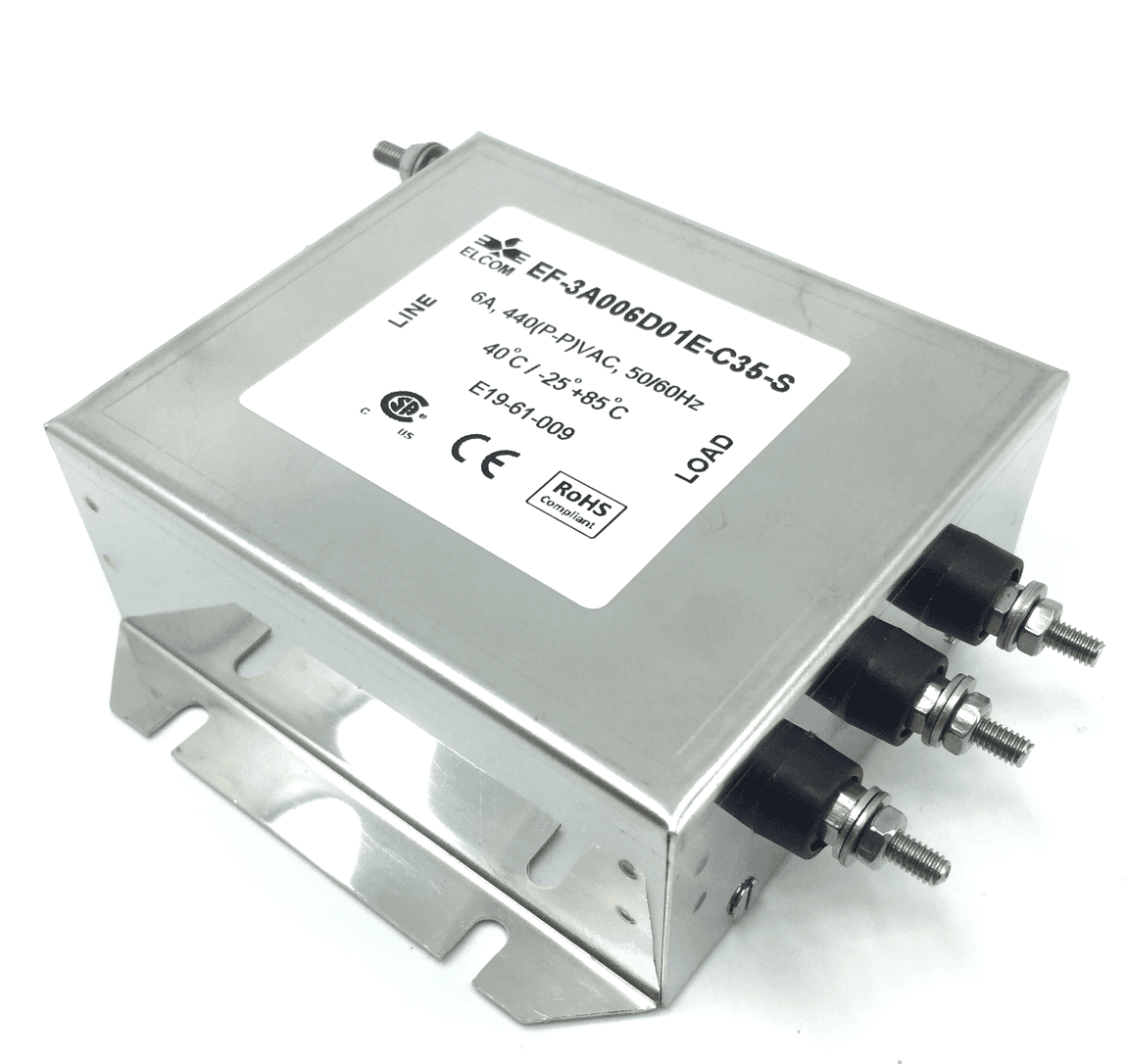EMI FILTERS
Understanding the Dynamics of an EMI Filter
9th April 2025
By Team Elcom
Firstly we need to understand what is an EMI?
Electromagnetic interference (EMI) is unwanted noise or interference in an electrical or electronic device caused by various outside sources which can be occurring naturally or man-made.
The Electromagnetic Interference (EMI) can be classified into two types as: –
1. Conducted Electromagnetic Interference (Conducted EMI):
Conducted emissions are the noise components that are generated by a device or subcircuit and get transferred to another device or subcircuit through cabling, PCB traces, power/ground planes, or parasitic capacitance. The conducted emissions that appear on the interface and power cables must be kept low or they can enter through cables and reach to other devices, which can cause problems to other connected devices.
2. Radiated Electromagnetic Interference (Radiated EMI):
Radiated emissions are the noise components that the whole system generates as an electromagnetic field, so it can propagate through the air and reach other devices around it.
EMI can cause electronics to degrade or even malfunction the performance of electrical equipment. This is why we require EMI EMC Filters in Electronic equipment which improves the quality of a signal passing through the electronic devices and thus improves functionality of electrical equipment.
What is an EMI EMC Filter?
An EMI filter is a passive electronic device used to suppress conducted electromagnetic interference present on any power or signal line. It may be used to suppress the interference generated by the device itself, as well as to suppress the interference generated by other equipment to improve the immunity of a device to the EMI signals present within its electromagnetic environment. Most EMI filters are designed to suppress both common mode and differential mode interference. Filters can also be designed with added devices to provide transient voltage and surge protection.
How do EMI filters work?
An EMI filter has a high reactive component to its impedance. So, EMI filters are low-pass filters that block high frequencies while they allow lower frequencies to pass through. After the filtering process, electromagnetic noise gets diverted away from the device and to the ground. Some EMI filters may also route unwanted currents back to the noise source or absorb them.

Because EMI filters only protect against conducted EMI, they are often paired with shields that block radiated EMI. Adding a shield at the attachment point of the electromagnetic interference filter can effectively block all forms of EMI.
To keep out radiated/electromagnetic waves, the filter must be paired with a shielding.
Various types of shielding methods are as follows:
1) Putting a filter very close to the point of entry
2) Using shielded input cables
3) Using metal case filters
4) Proper and firm grounding
Without these, EMI can radiate through the air, similar to radio waves, and cause interference even when a filter is installed.
EMI RFI Filters can be found in home appliances, medical equipment, laboratory equipment, radio equipment, automation products, computing devices, testing – measuring equipment and military equipment.
Looking for help?
Our team is ready to assist you and provide the support you need